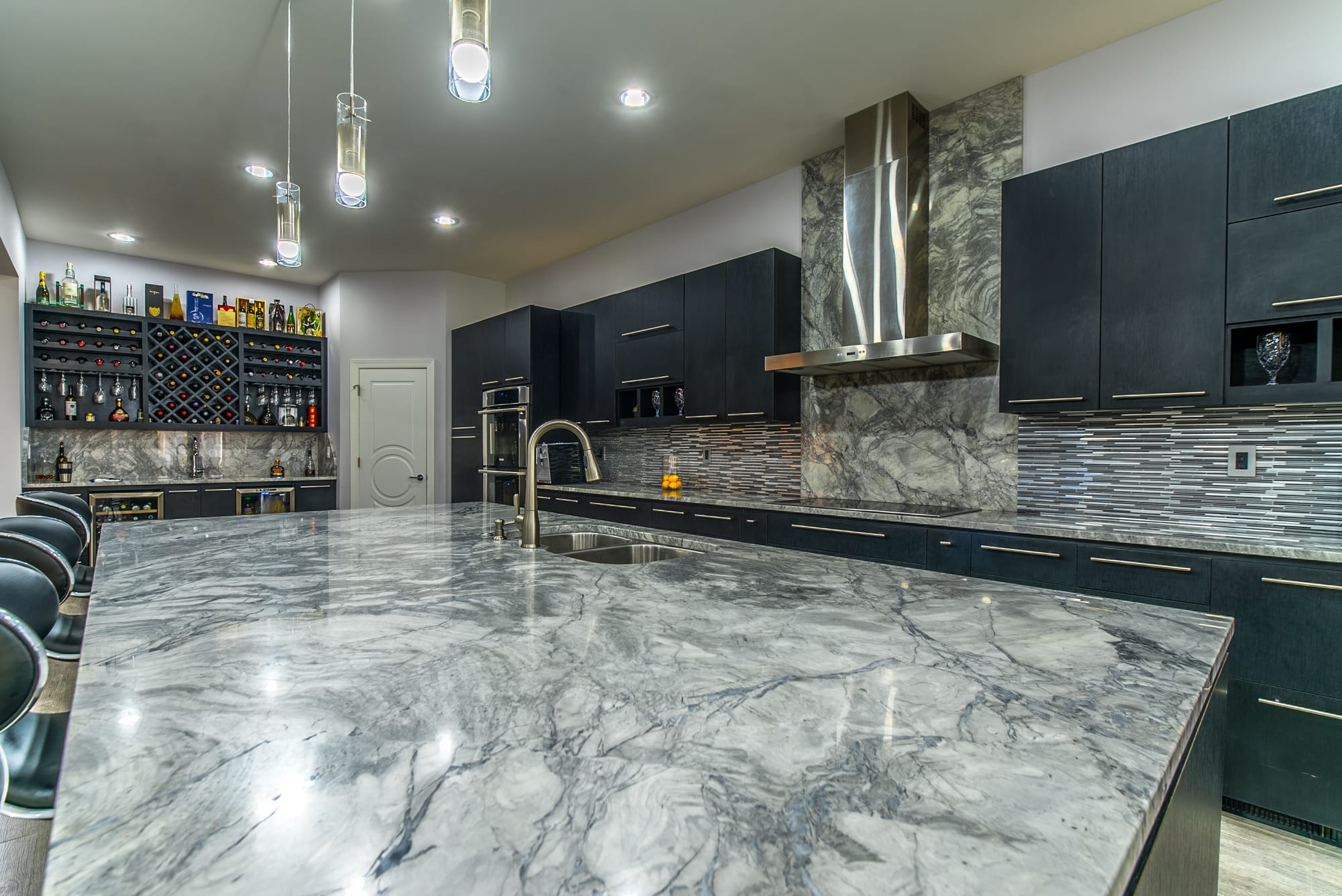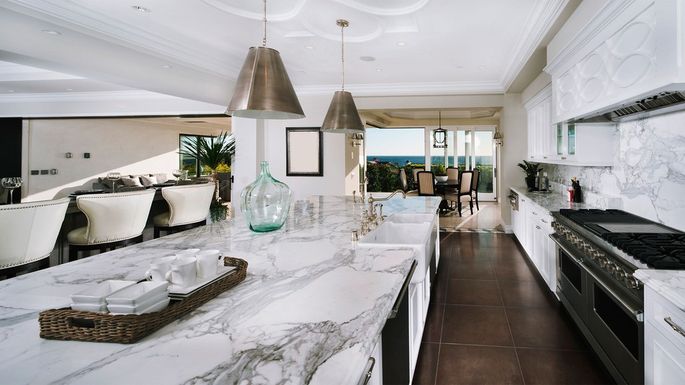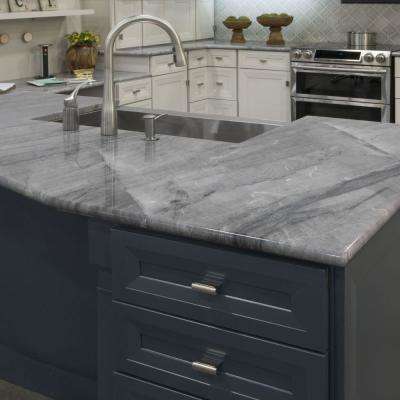How to Clean Marble Countertops and TileAcidic solutions can damage your marble surfaces. Here’s how to keep marble clean and looking amazing We love marble, but what most people don’t love is the concern that comes with cleaning and caring for the popular, porous surface famously susceptible to etching and staining, especially in the kitchen. Luckily, according to marble experts, where there’s a will, there’s a way, and caring for the classic beauty of a marble surface may be easier than you think. Here’s how to clean marble countertops. Keep It Clean What people have to look out for is not necessarily staining, but etching. Because anything that is acidic is going to etch the surface. That’s just the way it is. Etching on a marble surface happens when something like lemon juice, alcohol or tomato sauce is splashed, dripped or spilled onto it. If it is not wiped up right away, the acid reacts and eats away at the calcium carbonate in the stone, creating permanent markings that look like dull, slightly darker spots or rings on the marble. How light hits the marble determines how noticeable the etching is. In some light, the scarring will not be evident at all, while certain lighting will reveal the dulled areas. Many consumers visit restaurants, ice cream parlors, bars and other public venues that use marble countertops to check out what a working marble surface looks like and to decide whether they can happily live with the reality.  Good to Know Avoiding acidic solutions coming into contact with marble applies to cleaning products as well. The Marble Institue of Americca, or MIA, advises against using vinegar, lemon juice or other cleaners containing acid on marble, including bleach. Experts instead recommend only mild soap and water. There’s nothing on a countertop that you can’t get off with soap and water. Wiping down countertops and surfaces with warm, sudsy water and a nonabrasive sponge or cloth is the best method for cleaning, but it will not remove etching or stains that have had time to permeate the surface. The most popular marble finishes are polished and honed. A polished finish has a glossy surface, reflects light and shows off the color and markings in the marble. A honed finish is more satiny and smoother, with little light reflection, according to the Marble Institute. This finish is common for floors, stairs and other heavily trafficked locations. The tradeoff: Honed marble is more porous and will stain more easily. A polished piece of marble will stain less but etch more. So pick your poison.  Island Light Kitchen islands topped with marble are usually the No. 1 place you will notice etching. “It’s in the center of the kitchen, and it catches the light because you don’t have a backsplash to guard the glare. Sealer To reduce stains and etching, marble experts recommend applying a spray sealant at least once a month. Sealers are like buying time. What it is doing is sealing the top of the marble so things won’t penetrate quickly. If you were to spill red wine on a countertop and leave it overnight, you will have a stain, no matter what. However, if you wipe it up instead of leaving it sit, the sealant provides a barrier. It allows us time to clean our stains before they penetrate into the surface and actually stain it. Stains and Solutions The Marble Institute offers the following solutions for common problems. Oil-based stains (grease, cooking oil, cosmetics): Clean gently with a soft liquid cleanser, household detergent, ammonia or mineral spirits. Organic stains (coffee, tea, fruit, food): Clean with a mixture of 12% hydrogen peroxide and a few drops of ammonia. Rust stains (from metals): These stains must be removed with a poultice (see below) and are very difficult to remove. In fact, they may be permanent. Paint stains: Small amounts can be removed with lacquer thinner or scraped off carefully with a razor blade. Smoke stains: Commercial smoke removal products are available contact a stone professional near you for more info. Water spots and rings: Buff with dry #0000 steel wool. Etches and Solutions Acidic substances like milk, fruit, juice and alcohol will sometimes cause both etching and staining — a double whammy. If you are successful in removing the stain and want to attack the etching, the MIA suggests wetting the surface with water and sprinkling on marble polishing powder. Rub the powder into the stone with a damp cloth or use a buffing pad with a low-speed power drill or polisher. Continue buffing until the etch mark disappears and the marble surface shines. Honing may be required for deep etching.  Dirty Trick If stains are particularly stubborn, consider applying a poultice, or paste-like cleaning agent. Premixed commercial poultices that require adding only water can be purchased from stone maintenance supply companies. Application is straightforward. Mix the paste according to the directions; it should have the consistency of a thick peanut butter. Slather it on the stained surface. The Marble Institute recommends applying the poultice to be about one-fourth to one-half inch thick, beyond the outside of the stain. Use a wood or plastic spatula to apply the paste evenly. After you have applied the paste, the MIA advises covering it with plastic wrap and using painter’s tape to tape the edges down. Let it sit for 24 to 48 hours. After that, remove the plastic and allow the poultice to dry. The drying process should pull the stain from the stone. Once it has dried, remove the mixture (using a wood or plastic scraper if necessary), rinse with distilled water and buff dry with a soft cloth. Repeat if necessary. |